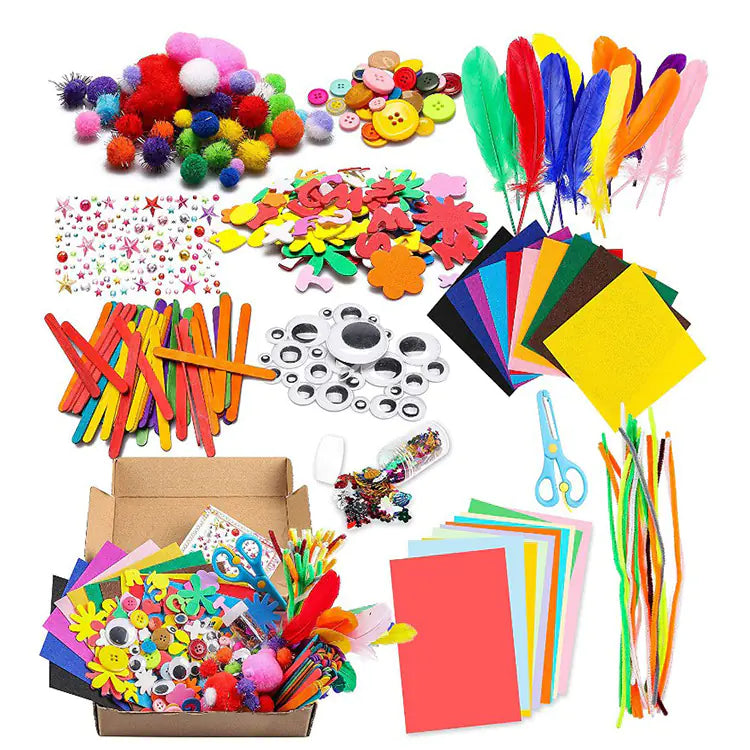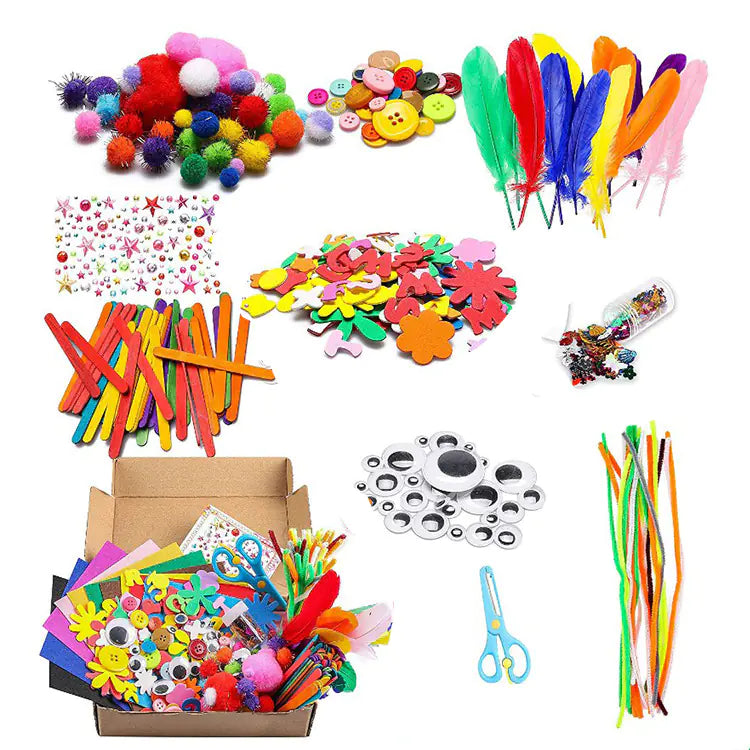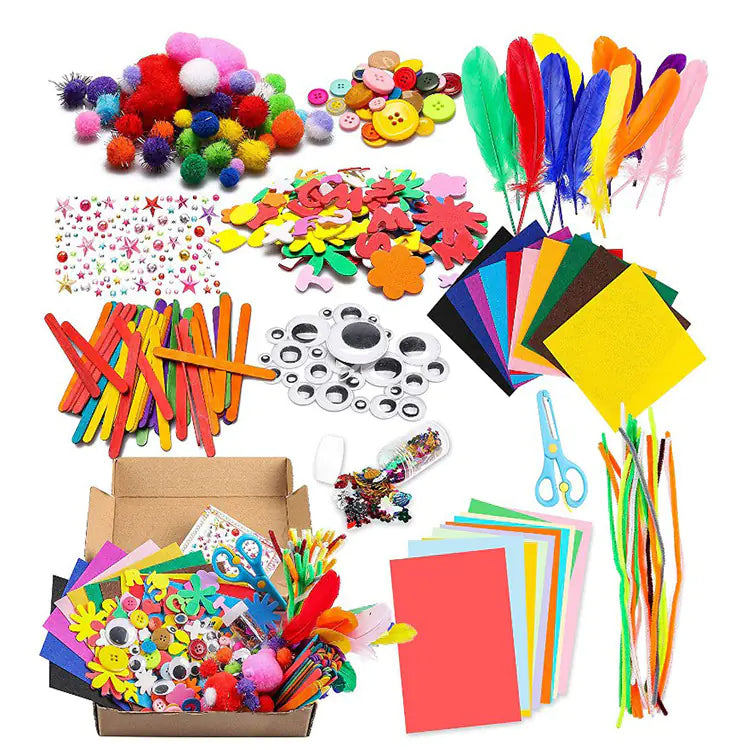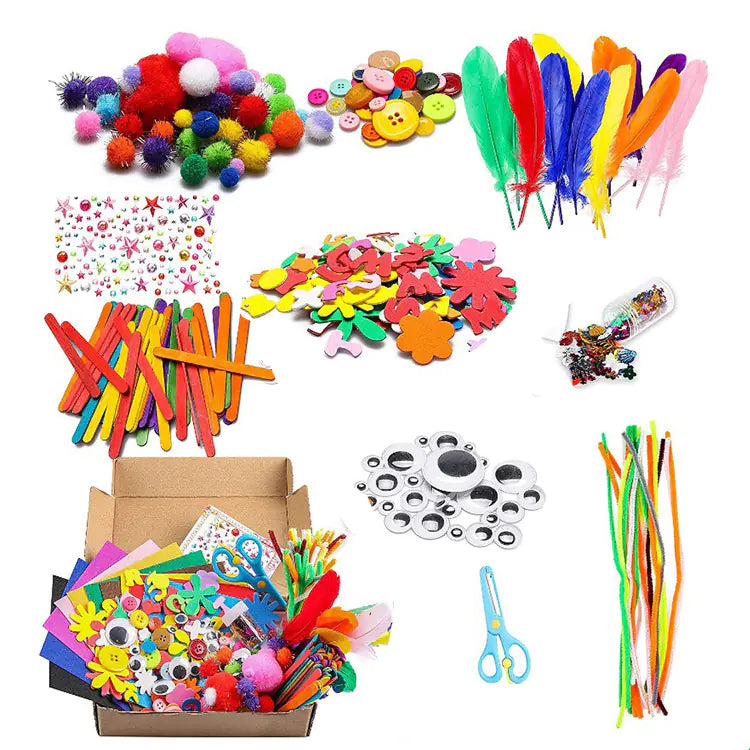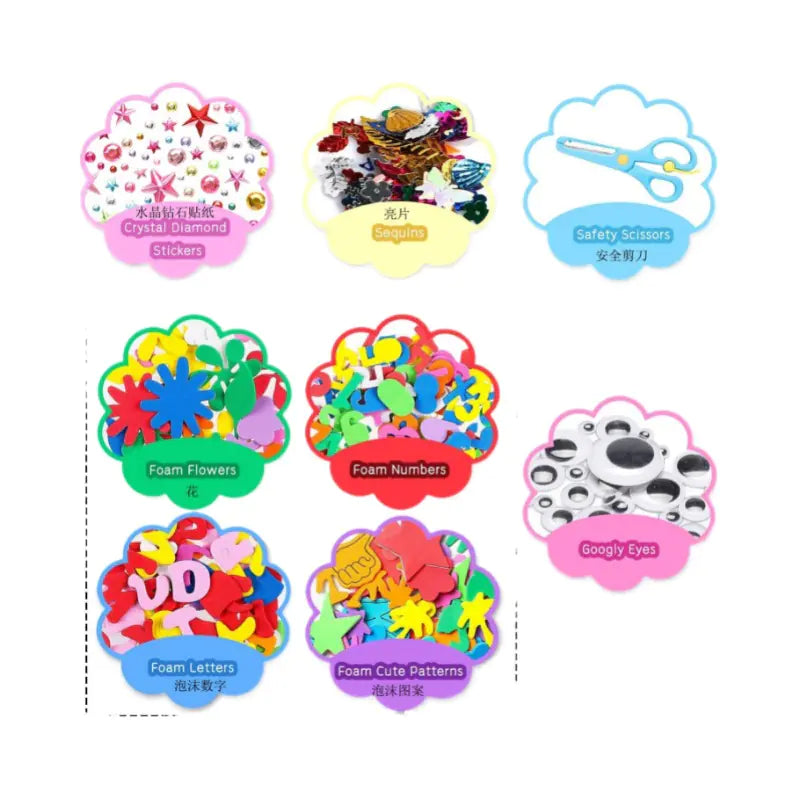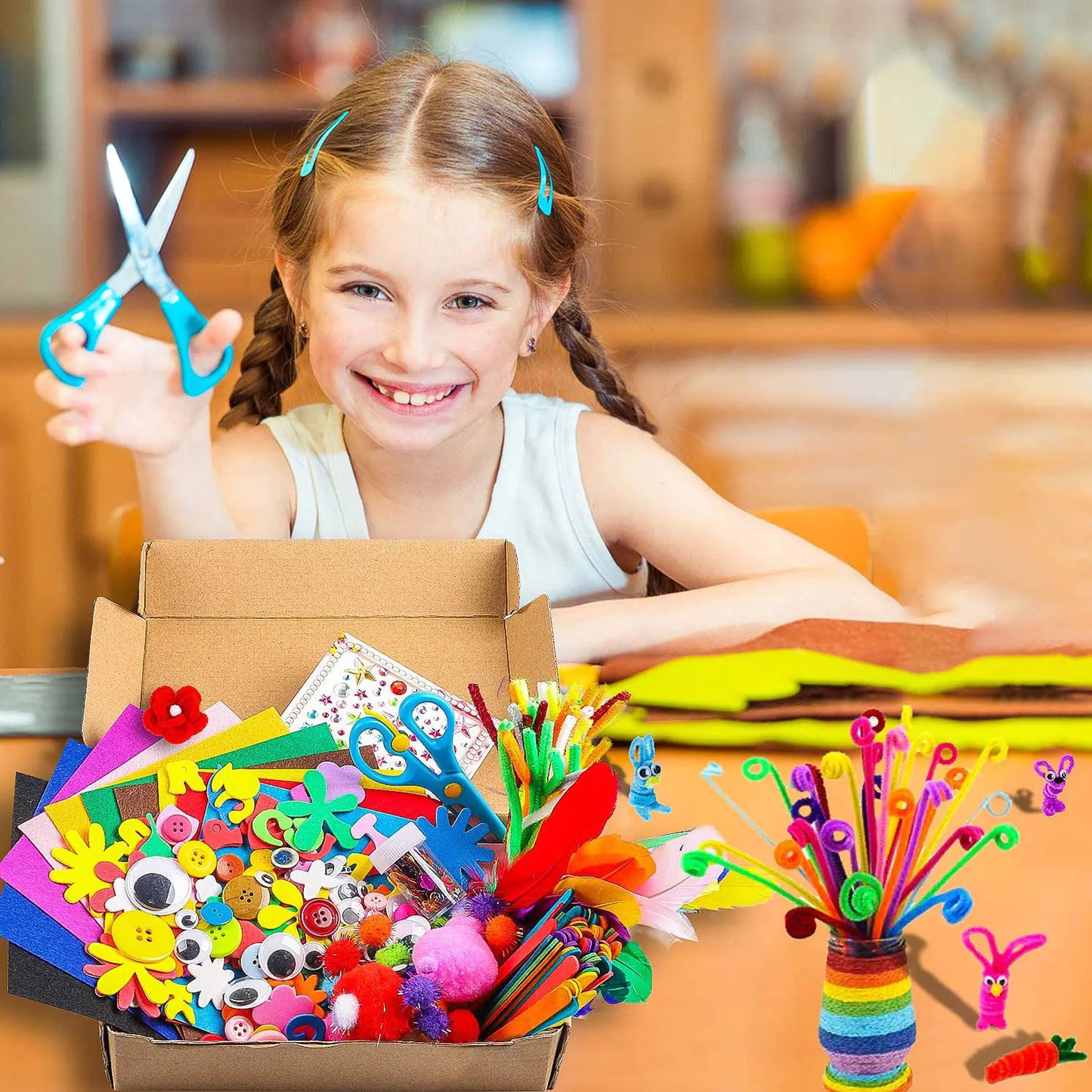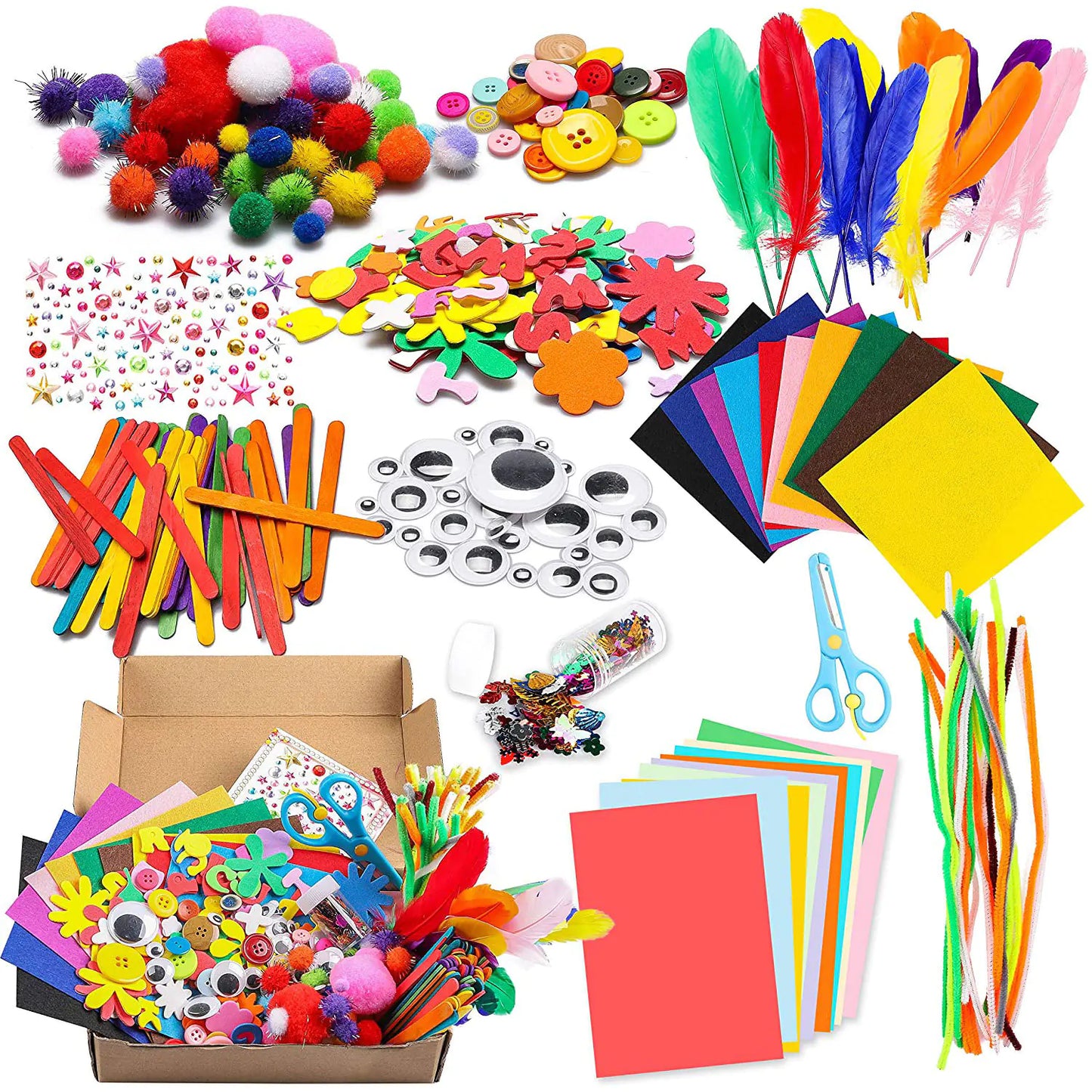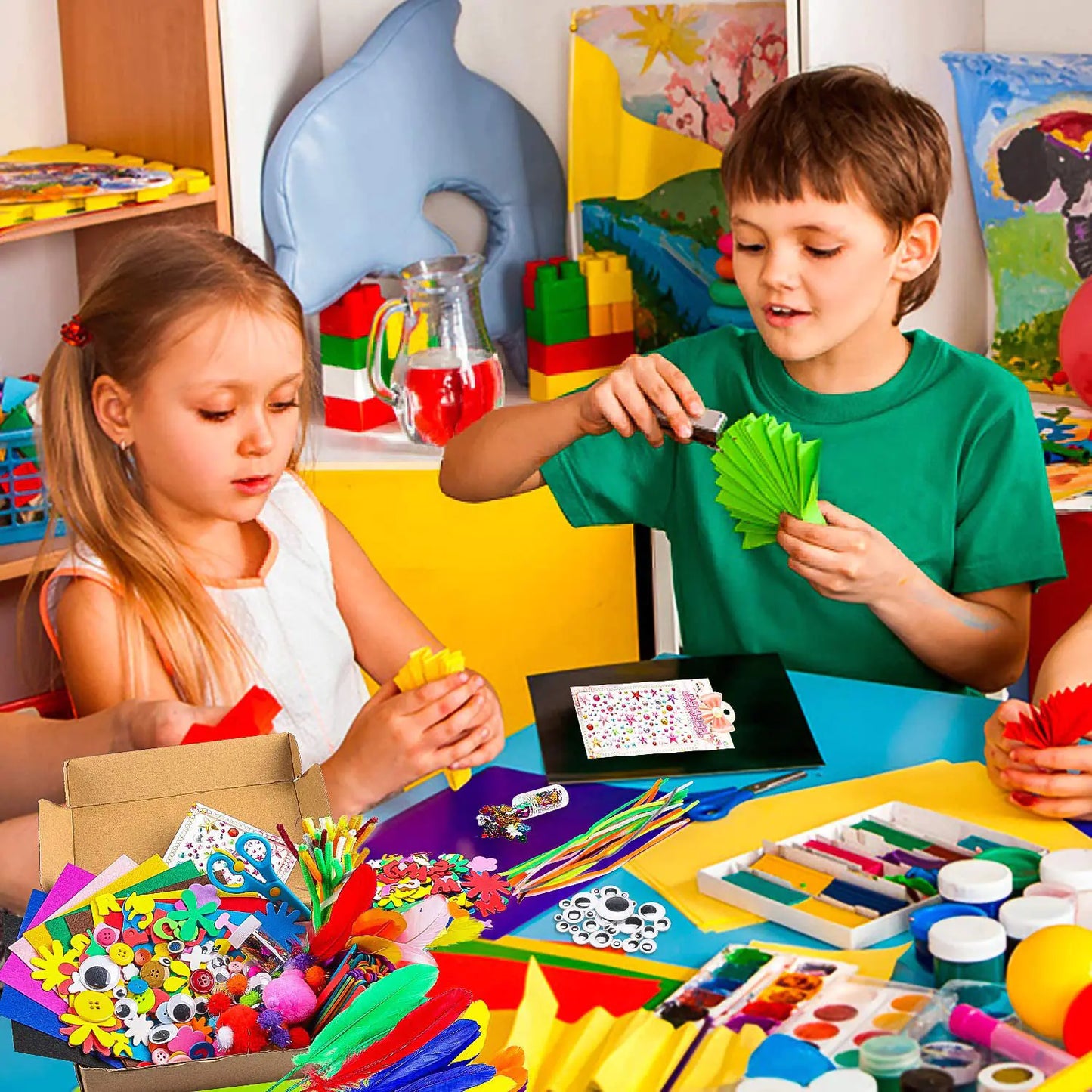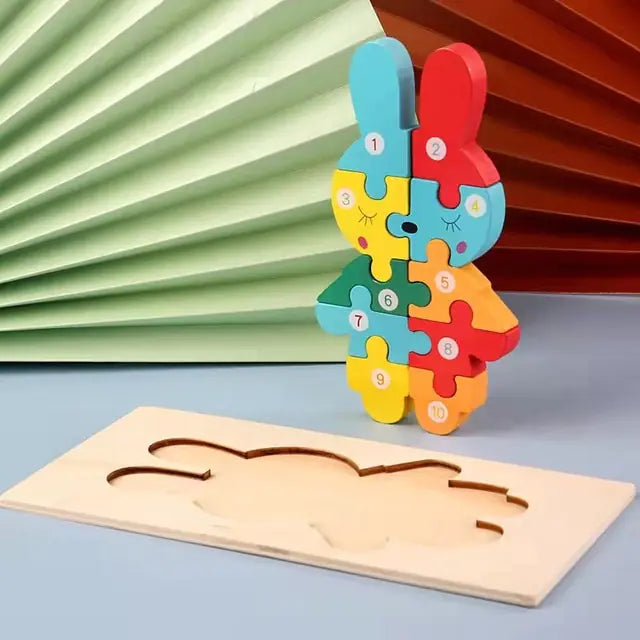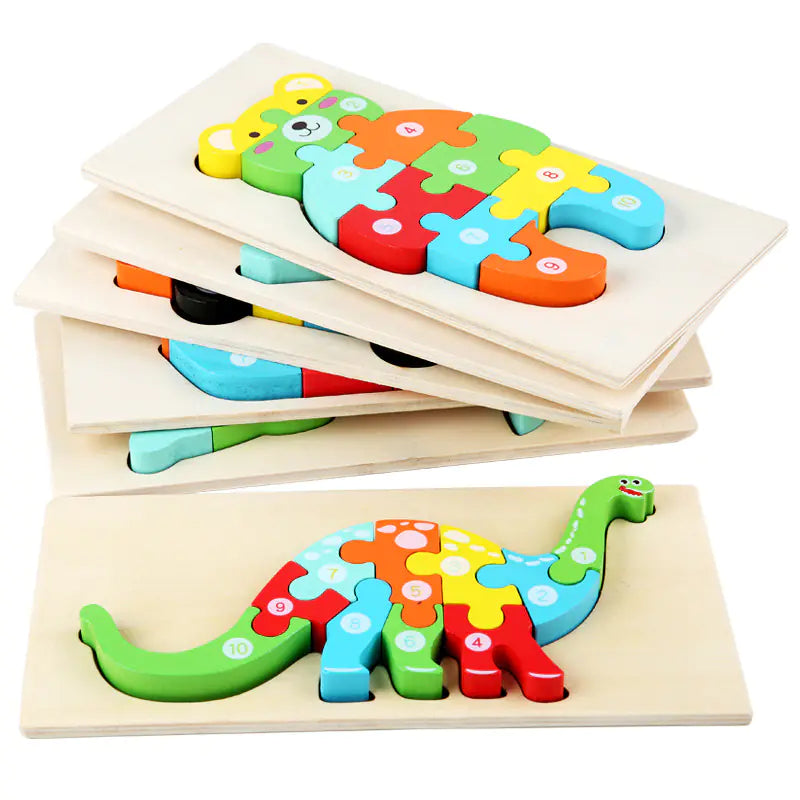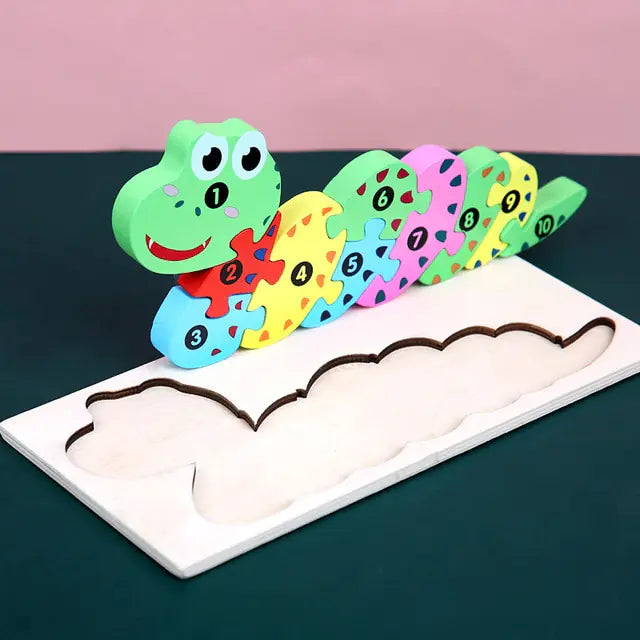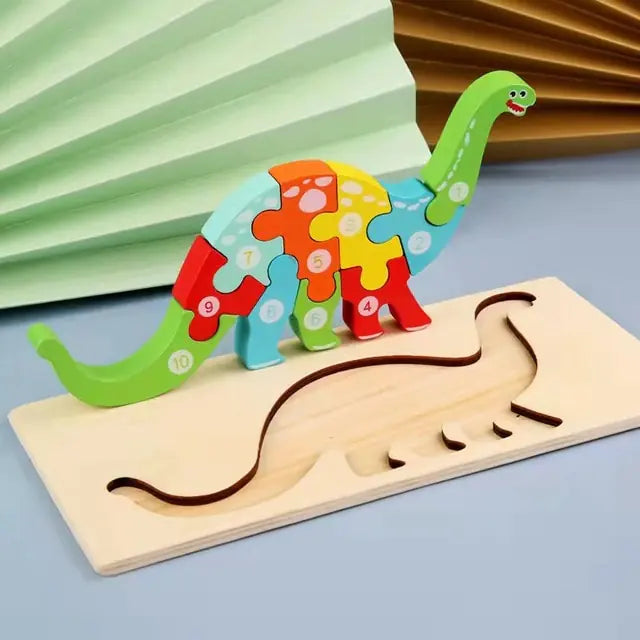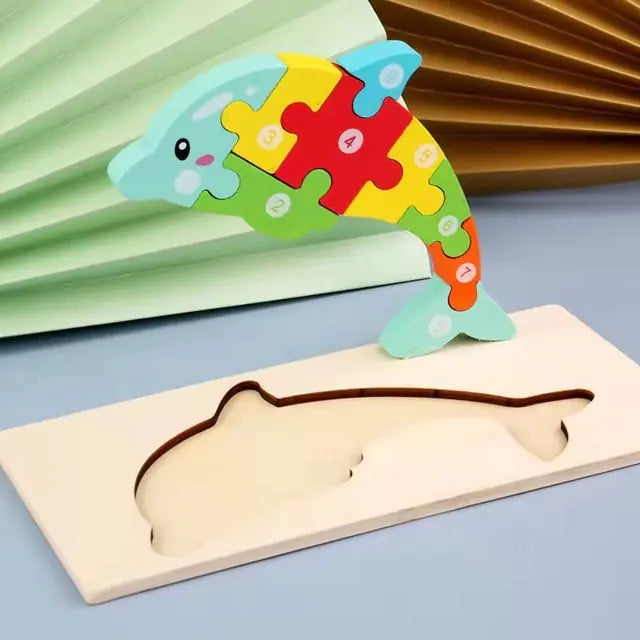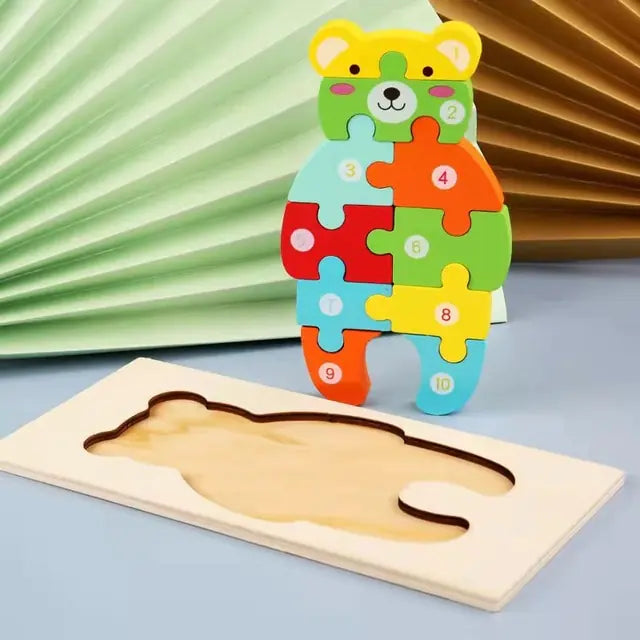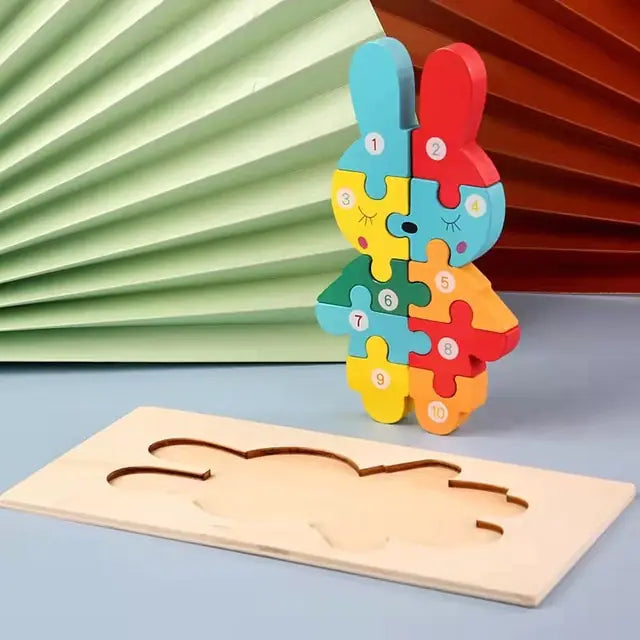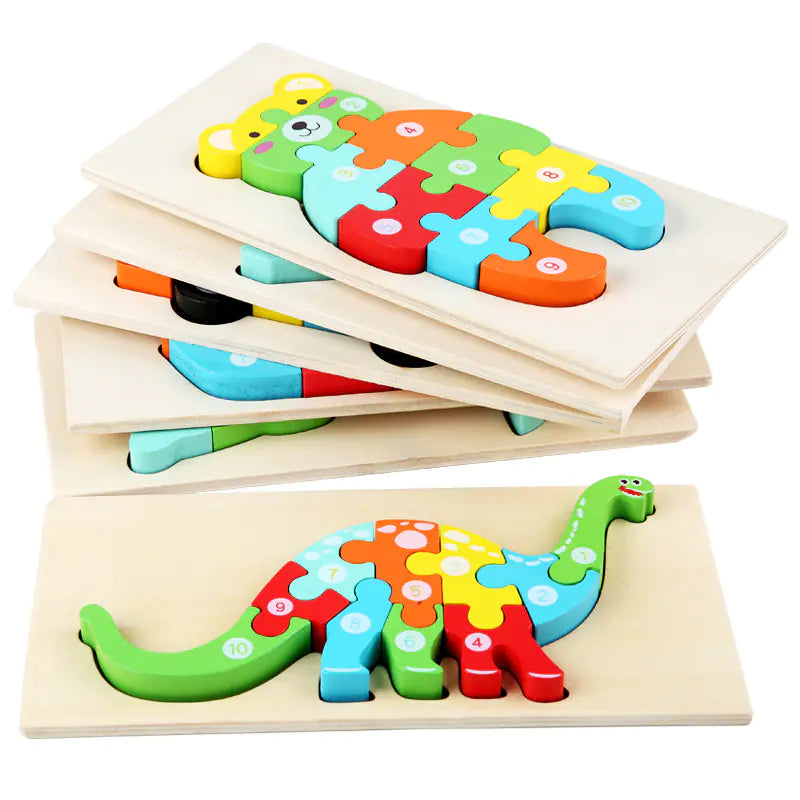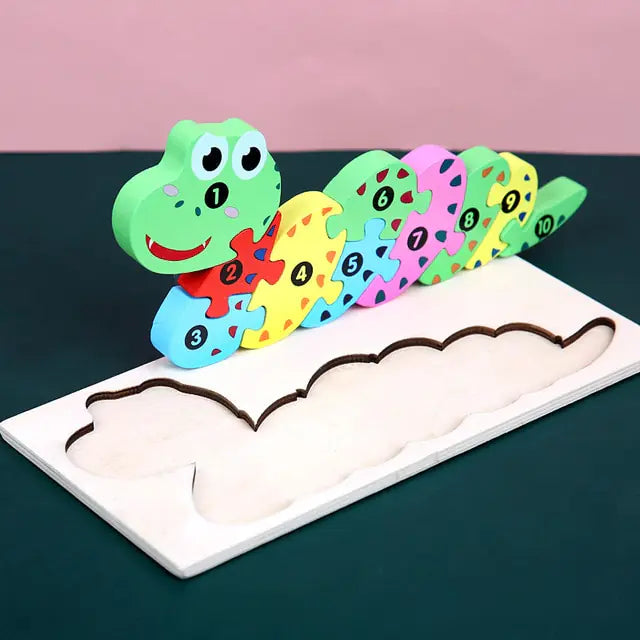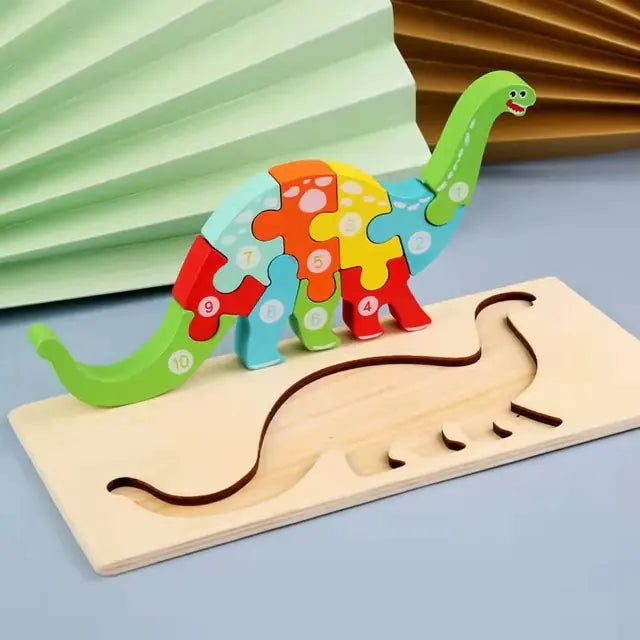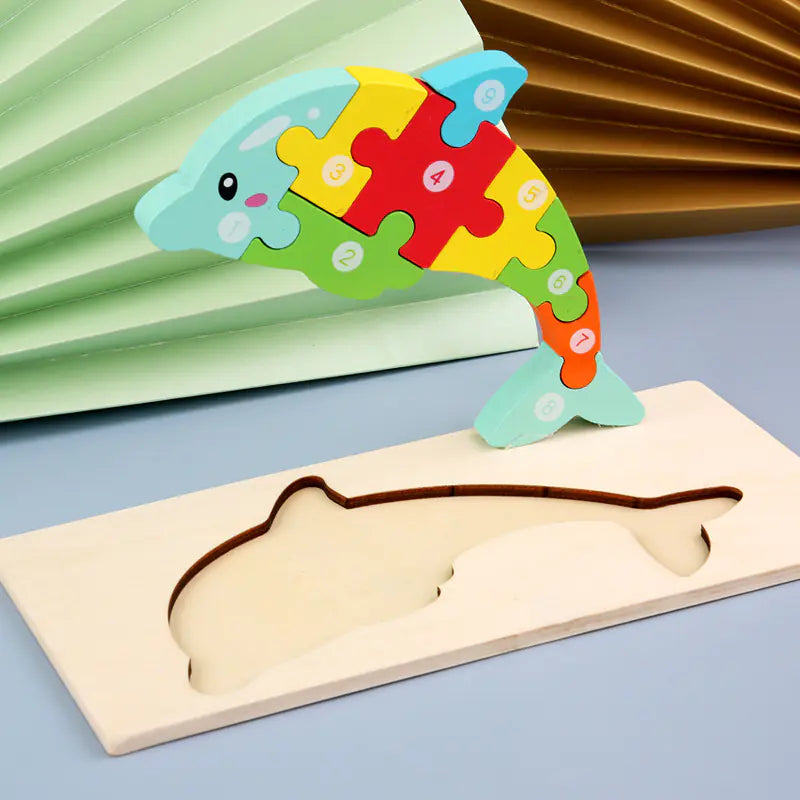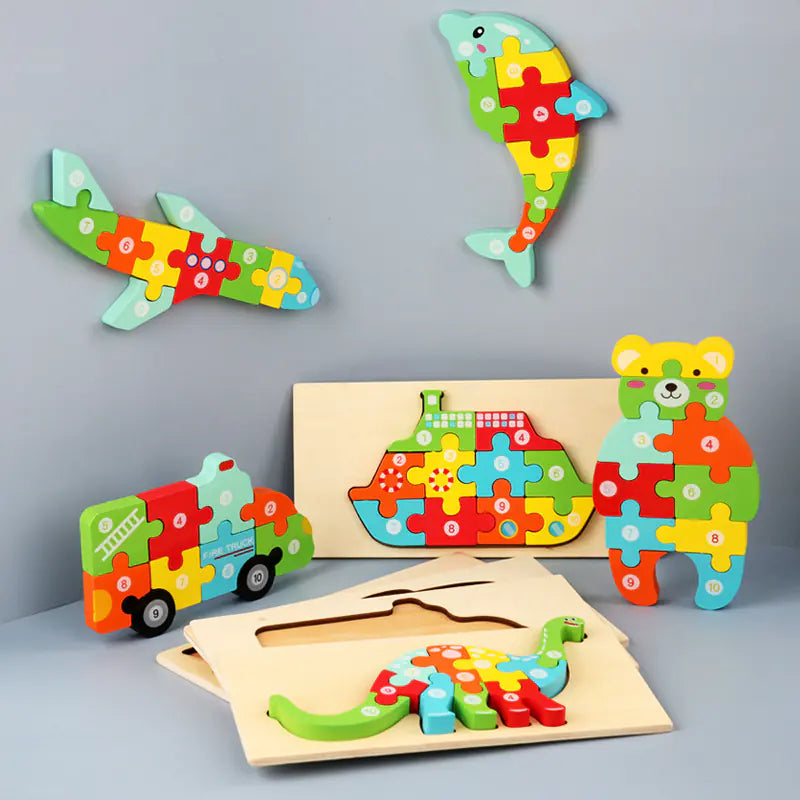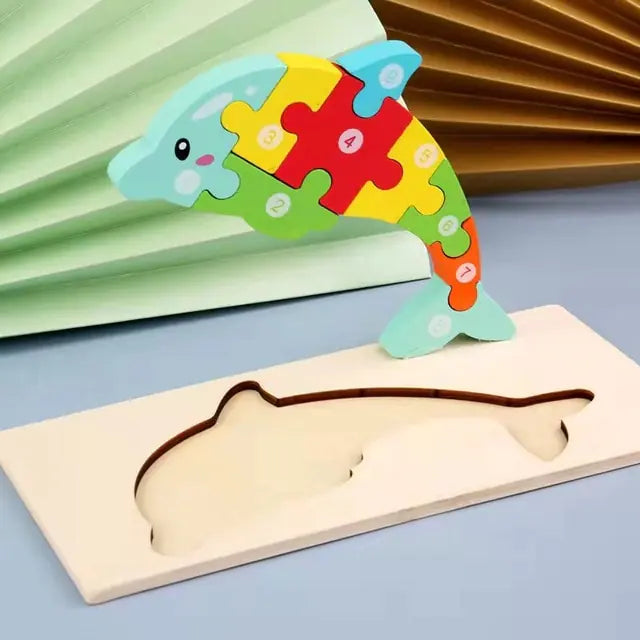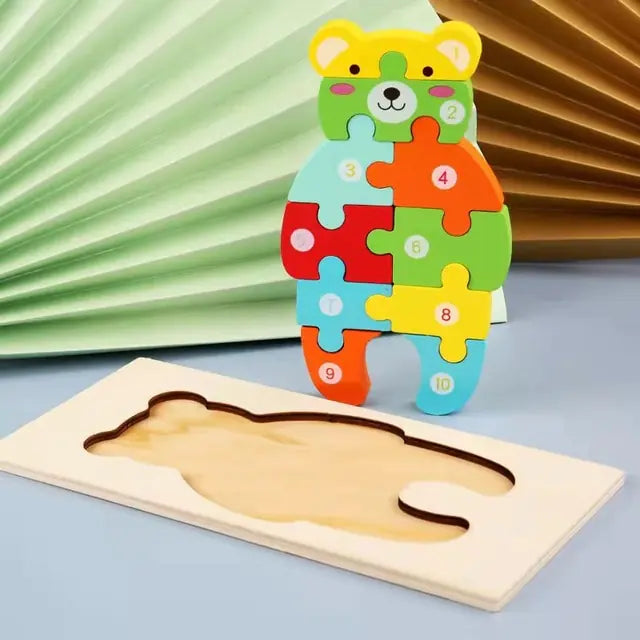In today's world, science and technology are very important. It's perfect for kids to play with fun toys and teach them something. STEM toys are unique because they mix playtime with learning about science, technology, engineering, and math. These toys help kids think better and solve problems, which is very useful. We will look at different STEM toys and see how they help kids learn about science and become creative thinkers.
STEM toys make learning fun because kids can touch and play with them. They help kids see how cool science and technology are by letting them build things and see how they work. Whether it's toys that help kids learn to code or ones that teach them about how buildings stand up, STEM toys prepare kids for a world where knowing about science and tech is very important. Let's explore how these toys make learning fun and help kids dream about becoming the inventors and problem solvers of the future.
Unleashing Creativity with Building Blocks and Construction Sets

From Simple Bricks to Complex Structures
Remember the joy of dumping out a big box of LEGOs and not knowing what you will build? That's where it all starts. Building blocks and construction sets are the playgrounds of the mind, where simple bricks evolve into complex structures. It's not just about following instructions to create a predefined object; it's about the journey from a pile of pieces to your own creation.
Creativity isn't confined to the arts—it's also essential in the world of STEM. By giving kids these toys, we're not just keeping them busy; we're helping them develop critical thinking and problem-solving skills. They learn to visualize in three dimensions, a crucial skill in many STEM fields.
By experimenting with building blocks, children grasp the basics of structural engineering, physics, and mathematics without even realizing they're learning.
Here's a quick list of what kids can learn from these toys:
- Spatial awareness and geometry
- Fine motor skills and coordination
- The basics of physics, like balance and stability
- Problem-solving and perseverance
- The joy of creating something from scratch
Encouraging your kids to play with building blocks and construction sets is more than just playtime; it's setting the foundation for a lifetime of curiosity and learning.
Encouraging Engineering Minds with Interlocking Pieces
I've seen firsthand how interlocking pieces from building sets can spark the engineer in every child. These toys are more than just fun; they're a gateway to understanding basic engineering principles. Kids are laying the groundwork for complex problem-solving skills by connecting pieces to create structures. It's not just about following instructions; it's about imagining, creating, and sometimes, watching your tower topple only to build it again, more robust.
Interlocking toys come in all shapes and sizes, catering to various age groups and skill levels. Here's a quick rundown of what you might find:
- For the little ones, large, easy-to-handle blocks that click together.
- As kids grow, sets become more intricate, with gears and movable parts.
- For the older kids, advanced kits involve motors and even programmable elements.
Encouraging your child to play with these toys isn't just about keeping them occupied; it's about nurturing their innate curiosity and their ability to think like an engineer.
Remember, the goal isn't to build the perfect structure on the first try. It's about the process, the trial and error, and the joy of creating something with two hands. So next time you're toy shopping, consider the humble interlocking block set – it might be the most valuable tool in your child's developmental toolbox.
The Role of Construction Play in Spatial Reasoning
As I watch my kids play with their construction sets, I can't help but marvel at the way they're developing their spatial reasoning skills. It's not just about stacking blocks; it's about understanding how different shapes fit together to create something new. Construction play is a powerful tool for developing a child's spatial awareness, and it's fantastic to see their little minds at work as they figure out how to balance, align, and build their creations.
Construction sets come in all shapes and sizes, perfect for kids who love to build and create. From simple interlocking bricks to more complex architectural models, these toys challenge children to think in three dimensions. Here's a quick list of activities that can boost spatial reasoning through play:
- Creating patterns with blocks
- Building symmetrical structures
- Solving puzzles to construct specific shapes
- Designing and constructing bridges and towers
Encouraging storytelling and role-playing through educational toys like dolls, action figures, and playsets empowers children to learn social skills, empathy, and problem-solving while having fun.
And let's not forget the joy of completing a challenging build. That sense of accomplishment is a huge confidence booster and encourages kids to take on even more complex projects. So next time you're looking for a toy that will entertain and educate, consider a construction set to help your child think big, literally and figuratively.
Coding for Kids: Introducing the Basics Through Play

Choosing the Right Coding Toys for Different Ages
As a parent, I know how crucial it is to find toys that are fun and educational. Coding toys it's all about hitting that sweet spot where play meets learning. Choosing a suitable coding toy for your child's age is critical to keeping them engaged and excited about learning to code.
For the little ones, starting as young as 4, screen-free options like 'Coding Critters can introduce basic coding concepts through storytelling and play. As they grow, the complexity of the toys can increase. For example, kids aged 8-12 might thrive with kits that offer age-appropriate challenges, allowing them to progress and tackle more advanced projects as their skills develop.
Here's a quick age guide to help you pick the perfect coding toy:
- Ages 4-7: Story-based coding toys
- Ages 8-12: Interactive coding kits with progressive challenges
- Ages 13+: Advanced coding sets that introduce natural programming languages
Remember, the goal is to foster a love for STEM that could blossom into a future career. With the right tools, your child can have a blast while building a solid foundation in coding and problem-solving.
Making Programming Fun with Interactive Challenges
As a parent, I'm always looking for ways to make learning feel like play. That's why I'm a huge fan of coding toys with interactive challenges. These toys are not just about tapping on a screen; they're about solving puzzles, building stories, and embarking on adventures—all while learning the basics of programming. Interactive challenges make coding tangible and engaging, turning abstract concepts into something kids can see and touch.
- Here are a few ways coding toys can spice up learning: *
- They often come with step-by-step missions that gradually increase difficulty, keeping kids motivated and feeling accomplished.
- Many coding toys integrate storytelling elements, meaning kids aren't just learning to code but also practicing their reading and comprehension skills.
- Some toys allow for open-ended play, where kids can use their imagination to create their coding projects from scratch.
Remember, the goal is to foster a love for learning and problem-solving. When kids associate coding with fun, they're laying down a foundation for a lifetime of curiosity and innovation.
How Coding Toys Can Lead to Future Career Skills
As I delve into the world of coding toys, I can't help but marvel at their potential to shape future career paths for our kids. Coding is no longer just a specialized skill; it's a universal language that can unlock countless opportunities. By introducing our children to coding through play, we're not just giving them a toy but the key to a future where technology is intertwined with every aspect of life.
Toys that teach coding come in various forms, from simple programmable robots to sophisticated software that makes game design a breeze for young minds. Here's a quick rundown of how these toys can set the stage for a bright career:
- Problem-solving: Coding toys challenge kids to think logically and solve puzzles, a cornerstone of any tech job.
- Creativity: They encourage children to experiment and create skills highly valued in fields like software development and engineering.
- Adaptability: As technology evolves, so must its masters. Kids who code learn to adapt to new tools and languages.
- Collaboration: Many coding toys allow group play, fostering teamwork and communication skills.
Embracing coding toys is more than a playtime decision; it's an investment in our children's ability to navigate and innovate in a tech-driven future.
Robotics and AI: The Future of Play and Learning

Understanding AI Through Hands-On Robot Kits
I've seen firsthand how robot kits can demystify the complex world of artificial intelligence for kids. By building and programming their robots, children grasp the basics of AI in a way that feels like play, not work. The hands-on experience is invaluable, turning abstract concepts into tangible skills.
- Here's why robot kits are more than just toys:
- They introduce the fundamentals of AI and robotics.
- Kids learn coding and problem-solving in a fun, interactive way.
- It's a stepping stone to more advanced STEM learning.
By engaging with robot kits, kids aren't just playing; they're building a foundation for future learning. These kits encourage exploration and innovation, key components of scientific thinking.
As a parent, I'm always on the lookout for toys that are not just entertaining but also educational. Robot kits hit that sweet spot, nurturing curiosity and intellect. It's thrilling to watch your child's eyes light up as their robot comes to life, knowing they're not just playing but learning the language of the future. And let's be honest, it's pretty cool to have a little robot scurrying around the house!
The Evolution of Robotics in Children's Toys
As a parent, I've seen firsthand the incredible robotics journey in children's toys. From the basic remote-controlled cars of my childhood to the sophisticated programmable robots available today, the transformation is nothing short of amazing. These modern toys are not just playthings but gateways to understanding complex concepts like coding and mechanics.
One of the most exciting aspects is seeing how these toys scale with age. Some robots teach cause and effect to the little ones through simple actions. As kids grow, the robots grow with them, offering more complex programming and problem-solving opportunities. Here's a quick rundown of how robotics toys can evolve with your child's age:
- Ages 3-5: Robots with straightforward controls and colorful designs to stimulate sensory learning.
- Ages 6-8: Introduction to basic programming concepts with more interactive robots.
- Ages 9-12: Advanced kits that involve building and coding their robots.
- Teens: Sophisticated projects that can include AI elements and real-world applications.
It's not just about the robots; it's about the skills they develop. These toys encourage critical thinking, creativity, and a love for learning that can last a lifetime.
What's more, the sustainability of these toys has become a priority. Eco-friendly materials and renewable energy sources like solar panels are now standard features, aligning playtime with environmental values. As we look to the future, I'm excited to see how these toys will continue to inspire and educate our kids in ways we can only imagine.
Preparing Kids for a Tech-Driven World with Robotic Play
As I delve into the world of robotics for kids, I'm struck by the sheer potential these toys have to shape young minds for a future that's increasingly intertwined with technology. Robotic toys are more than just playthings; they're gateways to understanding complex concepts like coding, mechanics, and even artificial intelligence. By introducing children to these ideas early on, we're not just entertaining them—we're equipping them with the skills they'll need to navigate a tech-driven world.
Hands-on robot kits make these abstract concepts tangible, allowing kids to see the immediate results of their problem-solving efforts. It's a powerful way to encourage creativity and foster a love for learning that can last a lifetime. And let's not forget the fun factor—there's something magical about watching a robot come to life through your programming!
Remember, the best STEM toys are those that grow with your child, making learning accessible and enjoyable at every stage. Choose toys that challenge and inspire, and watch as your little ones turn playtime into a foundation for success.
Puzzles and Games: Sharpening Minds One Piece at a Time

The Cognitive Benefits of Puzzle Solving for Young Minds
I've always been a fan of puzzles, which're more than just fun and games. Puzzles are a fantastic tool for developing critical thinking and problem-solving abilities in young minds. When kids work on puzzles, they're not just fitting pieces together but also learning to recognize patterns, understand spatial relationships, and develop patience and persistence.
Puzzles offer a hands-on learning experience that can foster creativity and problem-solving skills. Here's a quick rundown of the benefits:
- Enhances memory and cognitive function
- Improves visual-spatial reasoning
- Teaches patience and perseverance
- Encourages goal-setting and achievement
Puzzles challenge children to think and work towards a solution, giving them a sense of accomplishment when they complete the task. This boosts their confidence and eagerness to tackle new challenges.
As a parent, I love seeing the look of determination on my child's face as they work through a puzzle. It's not just about the result; it's the process that counts. And the skills they're developing? They're priceless.
Board Games That Teach Science and Math Concepts
As a parent, I'm always looking for ways to make learning fun for my kids. That's where games come in—they're a brilliant way to engage young minds in science and math without the groans and eye rolls. Board games that focus on these subjects can be a game-changer in education.
- Rapid Rumble: A card game that challenges kids to think quickly and strategically.
- Magna-Tiles: While not a board game, these 3D magnetic tiles offer a hands-on approach to geometry and design.
- Snap Circuits: For the budding electrician, this game introduces basic electronics through play.
These games not only entertain but also sharpen problem-solving skills and introduce complex concepts in a digestible way.
It's not just about having fun; it's about building a foundation for future learning. By incorporating these games into playtime, we're setting our kids up for success in a natural and enjoyable way.
Why Puzzles Are More Than Just Entertainment
As a parent, I've seen firsthand how puzzles do more than fill time; they're a stealthy form of education that sneaks in learning while kids are having fun. Puzzles are a brain-building powerhouse, fostering skills like problem-solving, patience, and perseverance. And let's not forget the joy of that 'aha!' moment when a piece fits just right.
- Puzzles enhance critical thinking and attention to detail.
- They improve memory and cognitive function.
- Completing puzzles boosts self-esteem and provides a sense of accomplishment.
Puzzles offer a unique blend of entertainment and education, where children learn to embrace challenges and develop a growth mindset.
It's not just about the satisfaction of completing the puzzle; the journey there counts. Each piece is a step towards a larger goal, teaching kids that even complex problems can be tackled one piece at a time. So, next time you're looking for a fun and educational toy, consider a puzzle. It's a simple, screen-free way to support your child's development and keep them engaged.
Exploring the Natural World with Science Kits

Fostering Curiosity with DIY Experiments
I've found nothing quite like the thrill of discovery to spark a child's interest in science. By incorporating DIY experiments into playtime, we can turn our homes into mini laboratories where curiosity leads the way. Simple, everyday items can become tools for exploration, teaching kids that science is everywhere and within their grasp.
Here are a few DIY experiments to get started:
- Create a homemade lava lamp to explore the density of liquids.
- Experiment with the freezing point of water by adding salt.
- Discover the principles of buoyancy with the classic sink or float challenge.
Encouraging kids to ask questions and seek their own answers through these experiments not only fosters a love for science but also develops critical thinking skills.
Remember, the goal isn't to have all the answers but to embrace the process of finding them. Let's nurture our future scientists by making discovery an adventure!
Science Kits That Bring the Classroom Home
I've always believed that the best learning happens when kids can touch, see, and explore concepts hands-on. I'm a huge fan of science kits that turn our living room into a mini laboratory. Educational kits cater to different expertise levels, sparking curiosity in circuitry for kids. Hands-on experience fosters innovation and problem-solving skills, enhancing learning and creativity.
With these kits, every experiment is an adventure, from creating stretchy slime to building a tabletop volcano. It's not just about the 'wow' factor; it's about understanding the 'how' and 'why' behind each reaction.
The beauty of bringing the classroom home is that it allows for flexibility in learning. Kids can dive into experiments at their own pace; there's always room for a do-over if something doesn't go as planned. Here's a quick rundown of what a typical science kit includes:
- Illustrative manuals to guide young scientists
- A variety of chemicals and test tubes for conducting experiments
- Safety equipment to ensure a secure learning environment
These kits are more than just educational; they're a bonding opportunity. I love seeing the excitement in my child's eyes when we discover something new together. It's a shared journey of discovery that goes beyond the pages of a textbook.
Connecting with Nature Through Scientific Discovery
I've seen firsthand how science kits can turn the backyard into a laboratory and the living room into a greenhouse. Encouraging kids to explore the natural world is not just about teaching them facts; it's about sparking curiosity. With a simple science kit, my daughter learned how plants absorb water by dyeing flowers in different colors. A beautiful blend of art and science kept her engaged for hours.
- Experiment with plant growth by starting a small herb garden.
- Observe insect behavior with a bug catcher kit.
- Discover the principles of ecology by creating a terrarium.
These hands-on activities make the abstract concepts of science tangible and relatable. They're not just learning; they're becoming little scientists, making observations, and asking questions that lead to a lifetime of discovery.
Mathematics Made Fun: Numbers, Shapes, and Patterns

Math Toys That Turn Learning into an Adventure
I've seen firsthand how suitable toys can transform math from a daunting subject into a thrilling quest for knowledge. Math toys are not just about numbers and equations; they're gateways to critical thinking and problem-solving skills. With various puzzles, games, and interactive tools, kids can explore mathematical concepts in a way that feels like play.
- Counting caterpillars that teach number sequences
- Shape sorters that introduce geometry
- Math board games that make addition and subtraction a group adventure
By integrating play with education, math toys make learning an engaging and enjoyable experience for children of all ages.
It's essential to choose toys that match your child's developmental stage. For toddlers, brightly colored counting beads capture their attention, while older kids might dive into strategy games that involve more complex math. The joy they find in these challenges today can spark a lifelong passion for STEM fields tomorrow.
Building a Solid Foundation with Educational Math Games
As a parent, I've seen firsthand how educational math games can lay a strong foundation for our kids' future. Math isn't just about numbers; it's about problem-solving and logical thinking. By integrating fun into learning, we can help our children develop a love for math that will carry them far in life.
Puzzles and games that involve numbers, shapes, and patterns are more than play; they're a form of active learning. When kids engage with these games, they're not just memorizing facts but understanding concepts. Here's a quick list of benefits:
- Encourages critical thinking and strategy
- Reinforces memory and recall
- Builds confidence in math skills
- Promotes independent learning
Educational math games are a bridge between play and learning, where children can explore mathematical concepts in a stress-free environment.
Choosing the suitable game for your child's age and skill level. It's about finding that sweet spot where the game is challenging enough to keep them engaged but not so complex that it becomes frustrating. With the right approach, math can become a highlight of their day, not a chore.
The Importance of Early Math Skills Development
I've seen firsthand how early math skills are not just about numbers; they're the building blocks for logical thinking and problem-solving. Introducing math concepts through play can make a huge difference in a child's comfort and ability with math later in life. It's about creating a positive relationship with math from the start.
Educational math toys come in all shapes and sizes, designed to introduce concepts like counting, sorting, and pattern recognition in a way that feels like pure fun. Here's a quick list of some math skills and the toys that can help nurture them:
- Counting and number recognition: Number puzzles, counting books
- Sorting and categorizing: Shape sorters, matching games
- Pattern recognition: Bead sequencing sets, color and shape mosaics
- Spatial awareness: Building blocks, tangrams
By weaving math into everyday play, we encourage children's growth and learning through hands-on play with educational toys that teach math, shapes, patterns, and sequences in a fun and engaging way, fostering a lifelong love for learning.
Remember, the goal isn't to turn playtime into a math lesson but to let the natural curiosity and joy of learning lead the way. When we do this, we lay the groundwork for a bright and confident mathematical future.
The Art of Learning: Incorporating STEM into Creative Play

Blending Art and Science for Holistic Development
I've always believed that the true essence of learning comes from a blend of disciplines. That's why I'm a huge advocate for STEM toys that merge art with science, creating a holistic approach to development. These toys nurture creativity and instill a scientific temperament in children from a young age.
Italics aren't just for emphasis; they represent the seamless integration of aesthetics and logic these toys bring. By engaging with them, kids learn to appreciate the beauty in patterns and precision in design, all while developing their cognitive and problem-solving skills.
Here's a quick rundown of the developmental benefits:
- Cognitive Development: Enhances thinking & problem-solving
- Imagination & Creativity: Fosters artistic expression
- Physical Development: Improves fine motor skills
- Social & Emotional Development: Encourages communication & collaboration
Encouraging STEM activities for hands-on fun and cognitive development through play is not just about education; it's about preparing our kids for a future where they can thrive.
Toys That Teach Symmetry, Geometry, and Design
I've always been fascinated by how toys can turn complex concepts into playful experiences. Take symmetry, geometry, and design, for example. These aren't just academic subjects but the building blocks of the world around us. And there's nothing like a toy to make learning them feel like a game. Toys that focus on these elements can spark an interest in mathematics and art, blending the two in a natural and fun way for kids.
Here's why these toys are a hit in our house:
- They encourage kids to recognize patterns and shapes in their environment.
- Children learn to predict and understand the balance and aesthetics of design.
- They provide a hands-on approach to learning that textbooks can't match.
Encouraging kids to play with toys that teach symmetry and geometry helps them develop a keen eye for detail and a love for design that could influence their future hobbies or even career paths.
It's not just about the toys themselves but the skills they nurture. Spatial awareness, problem-solving, and creative thinking are all gifts that keep on giving, long after the toys are put away. And let's be honest: Who doesn't love a toy that offers both fun and educational value? It's a win-win in my book.
Encouraging Artistic Expression Through STEM Activities
As a parent, I've seen firsthand how STEM toys can spark a love for science, technology, and the arts. Incorporating STEM into creative play can unlock a child's imagination and artistic potential. For example, toys that involve symmetry and geometry encourage kids to think about design in new ways, blending the precision of math with the freedom of art.
Interactive STEM activities combining music, drawing, or storytelling with coding and building can lead to innovative creations. Here's a quick list of benefits these toys provide:
- They foster an appreciation for aesthetics alongside analytical thinking.
- Children learn to see the connection between different fields of knowledge.
- It nurtures problem-solving skills with a creative twist.
By giving our kids the tools to explore and create, we're not just preparing them for the future; we're helping them to express who they are today. And that's something truly special.
Eco-Friendly STEM Toys: Sustainable Learning for a Better Tomorrow

The Rise of Green Toys in STEM Education
As a parent, I'm always on the lookout for toys that are not only educational but also environmentally friendly. Eco-friendly STEM toys are becoming increasingly popular, and it's easy to see why. These toys are made from sustainable materials and designed to be recycled or biodegraded over time, reducing our carbon footprint and teaching our kids the importance of caring for our planet.
Eco-friendly STEM toys often come with the added benefit of being safer for our children and free from harmful chemicals sometimes found in conventional toys. Here's a quick list of benefits these green toys offer:
- Encouraging environmental stewardship from a young age
- Promoting safe play with non-toxic materials
- Long-lasting and durable, reducing waste
By choosing eco-friendly STEM toys, we're not just investing in our children's education; we're investing in a healthier planet for their future.
How Sustainable Toys Encourage Environmental Awareness
When we choose eco-friendly STEM toys for our kids, we're not just buying a toy; we're making a statement about the kind of world we want to live in. Sustainable toys serve as a daily reminder to our children about the importance of protecting our environment. They're made from materials that are safe for our planet, often using recycled or biodegradable components, and they avoid harmful chemicals. Playing with these toys teaches kids that every choice impacts the earth's health.
Eco-friendly toys also provide a hands-on way to teach kids about sustainability. For example, a toy that requires assembly can show how resources can be reused and repurposed. It's a practical lesson in waste reduction and resourcefulness that sticks with them far longer than any lecture.
- Promote multi-sensory and group play.
- Ensure accessibility
- Assign roles to foster inclusivity.
These points are crucial because they highlight how STEM toys blend learning with fun, encouraging exploration, critical thinking, and future STEM skills through hands-on play. By incorporating these elements, we're not just teaching our kids about science and math; we're preparing them to be responsible stewards of our planet.
Choosing Toys That Are Safe for Kids and the Planet
As a parent, I'm always looking for fun, educational, and safe toys for my kids and the environment. It's a win-win when we find toys that tick all these boxes, right? Choosing eco-friendly STEM toys is about more than just reducing our carbon footprint; it's about instilling a sense of responsibility in our children from a young age.
When shopping for toys, I look for those made with non-toxic materials and sustainable practices. It's reassuring to know that the toys my kids handle daily are free from harmful chemicals.
Here's a quick checklist I use when selecting safe and sustainable toys:
- Made with recyclable or biodegradable materials
- Non-toxic, BPA-free plastics (if plastic is used at all)
- Packaging that's minimal and recyclable
- Brands with a transparent supply chain
By choosing eco-friendly toys, we're not just protecting our children's health; we're also teaching them to care for the world around them.
Remember, every small choice we make can significantly impact our planet's future. Let's give our kids the tools to build a brighter, greener tomorrow.
Embark on a journey of sustainable learning with our Eco-Friendly STEM Toys, designed to inspire young minds while caring for our planet. These innovative toys foster creativity and critical thinking and instill a sense of environmental responsibility in the next generation. Encourage your child's growth and contribute to a better tomorrow by exploring our collection of sustainable learning tools. Visit Wonder Kids Toy Store today and discover the perfect blend of education and eco-consciousness for your little ones.
Wrapping It Up: The Joy of Learning with STEM Toys
As we've explored the exciting world of STEM toys, it's clear that these innovative playthings are more than just fun and games. They're a launchpad for imagination, a toolkit for problem-solving, and a bridge to the future of science and technology. Whether your little bean is constructing their first robot or solving complex puzzles, the joy of discovery is at their fingertips. So, let's keep encouraging our kids to tinker, explore, and think critically. After all, today's playful experiment could be the first step towards tomorrow's groundbreaking invention. Keep the curiosity alive, and who knows? Your child might just be the one to change the world!
What are STEM toys, and why are they important?
STEM toys are designed to engage children in science, technology, engineering, and mathematics through play. They are essential because they help develop problem-solving skills, creativity, and a love for learning in these critical areas.
How do building blocks encourage scientific thinking?
Building blocks and construction sets challenge children to design and build structures, which can introduce them to basic engineering concepts and enhance their spatial reasoning and problem-solving skills.
At what age should children start playing with coding toys?
Children can start playing with coding toys at a young age, with toys available for preschoolers. The key is to choose age-appropriate toys that introduce coding concepts in a fun and engaging way.
Can robotics toys prepare kids for the future?
Yes, robotics toys can provide a hands-on understanding of technology and AI, fostering increasingly important skills in a tech-driven world.
What cognitive benefits do puzzles offer to young minds?
Puzzles help improve memory, spatial awareness, and problem-solving abilities. They also teach patience and perseverance as children work towards completing the puzzle.
Are there science kits suitable for children who love nature?
Yes, there are science kits specifically designed to explore natural phenomena. These kits allow children to perform experiments and learn about the environment in a hands-on manner.
How do math toys make learning numbers and shapes fun?
Math toys turn abstract concepts into tangible and interactive experiences, making it easier for children to grasp numbers, shapes, and patterns through play.
What should I look for in eco-friendly STEM toys?
Look for STEM toys made from sustainable materials, non-toxic finishes, and companies with environmentally responsible practices. These toys are safe for children and the planet.


